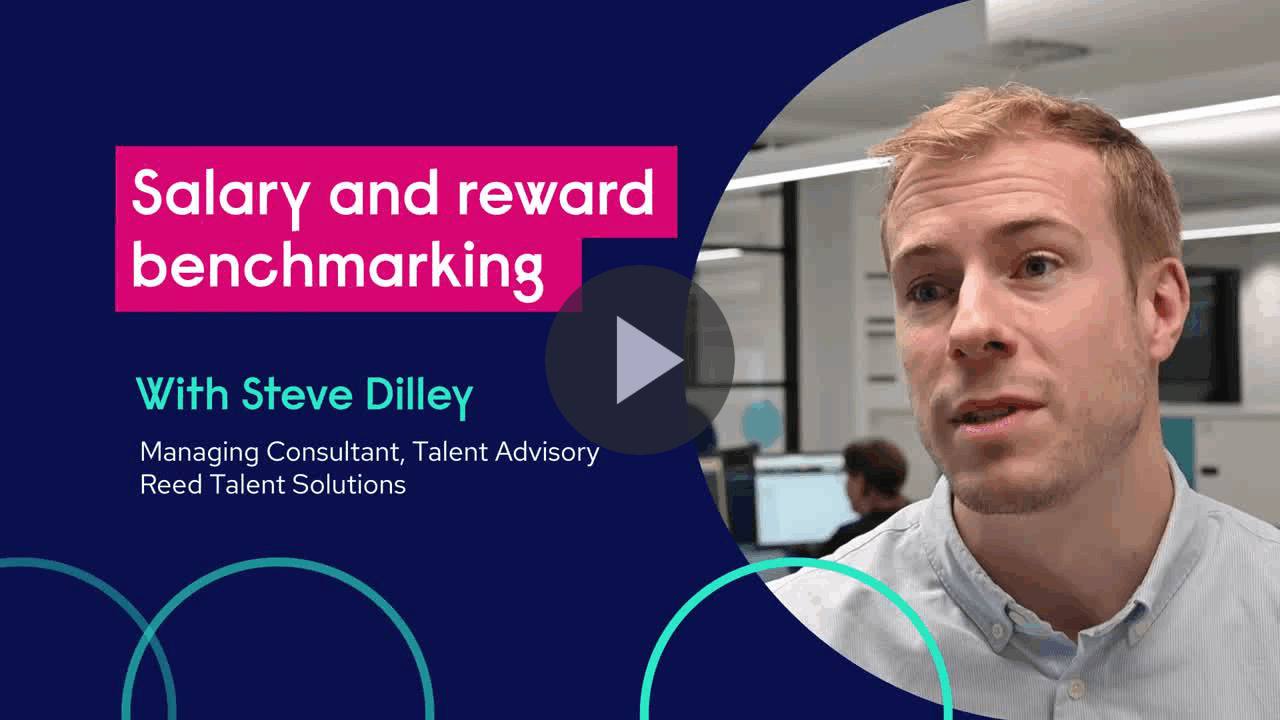How does your company compare to its competitors when it comes to the salary and rewards that you offer?
It’s not always a simple question to answer, but it is one that can have profound effects on your organisation. Get it wrong and you can find your top people heading out of the door to join your rivals.
Ever-changing candidate expectations, inflation, the cost-of-living crisis, a skills shortage across the country and the ongoing importance of salary are all issues companies are currently battling against when looking to retain high performers and attract new talent into their organisation.
In this article, we ask Reed Talent Solutions’ Managing Consultant for talent advisory, Steve Dilley, how to face these challenges head on and what emerging trends are shaping the reward sector now and in the coming years.

Q: In the modern workplace, to what extent is salary still king?
A: Salary has always been really important and it's still really important. I think when we look at most surveys around what people want from their next employer or why do they stay in their roles, salary is more often than not the number one reason.
But what employers can do is utilise other tools, such as improving their overall benefits package, or defining and marketing an effective employee value proposition (EVP).
These tools can help you reduce the reliance on salary. And what we have seen is that people often want to be valued. They want to be paid what they perceive they are worth, and they don't necessarily need to be paid the most. Looking at where you sit in the market and understanding what type of employer you want to be is really important.
Q: How do you know if you have got the right salary and rewards in place for your team?
A: With benchmarking, it's important to understand where you want to be as an employer. Some employers might want to pay at the very top end of the market. Others may want to pay around the median. Before you go out and gather the information, it's understanding where you want to sit in your market.
Another tool that you can use is feedback. That's getting feedback from candidates who didn't accept a role, candidates who did, getting feedback from your current people, and other external stakeholders as to how they perceive your total pay and benefits package.
Q: How can you change and adapt what you offer to make sure employees remain satisfied and motivated and new professionals are attracted to your organisation?
A: This is similar to what we talked about before in terms of being agile in what you offer, having the right tools in place to get feedback, being able to undertake research on what people want in the market, or what your competitors are doing.
Something that we've done with customers that's been really effective has been a critical success factors workshop. That's sitting down with your staff, understanding what motivates them, what's critical to your reward, to the success of your reward package, and also how they perceive you versus your competitors. Running these things periodically is going to enable you to stay on top of that and be able to make changes, make sure that you are ahead of the game, and able to attract and retain the best talent.
Q: How should organisations consider approaching their reward strategies in light of the changing demographics and expectations of the workforce?
A: This is about having an appreciation that different groups, different people, want different things. It is about not taking a one-size-fits-all approach to what you offer.
What I mean by this is doing things like offering a choice of benefits where people can opt in or out of certain incentives and offering a wide range of options, some that might appeal to gen z or millennials versus other groups in your workforce, and having that kind of multifaceted approach to make sure that you can appeal as widely as possible.
Q: What emerging trends can be see when it comes to salaries and rewards?
A: The obvious one to mention is upward pressure on wages. We've seen this in the news - record wage increases across all sectors and the public sector pay pressures.
This is a challenge for employers to be able to firstly understand how that's impacting them, and also manage their employees' expectations.
Looking at benefits, we've seen more and more employers offering a tailored benefits package, allowing employees to pick and choose which benefits they want to receive. This is great for a multigenerational workforce.
And then thirdly, we've seen new types of benefits. That might be new types of leave such as fertility leave or enhanced family leave policies. These all go to improve the overall package and perception for employees and prospective employees.
Our salary and reward benchmarking solution is designed to help your organisation understand what you should be offering when it comes to pay and benefits to attract and retain talent, learn more about how it can work for you on our dedicated page.





